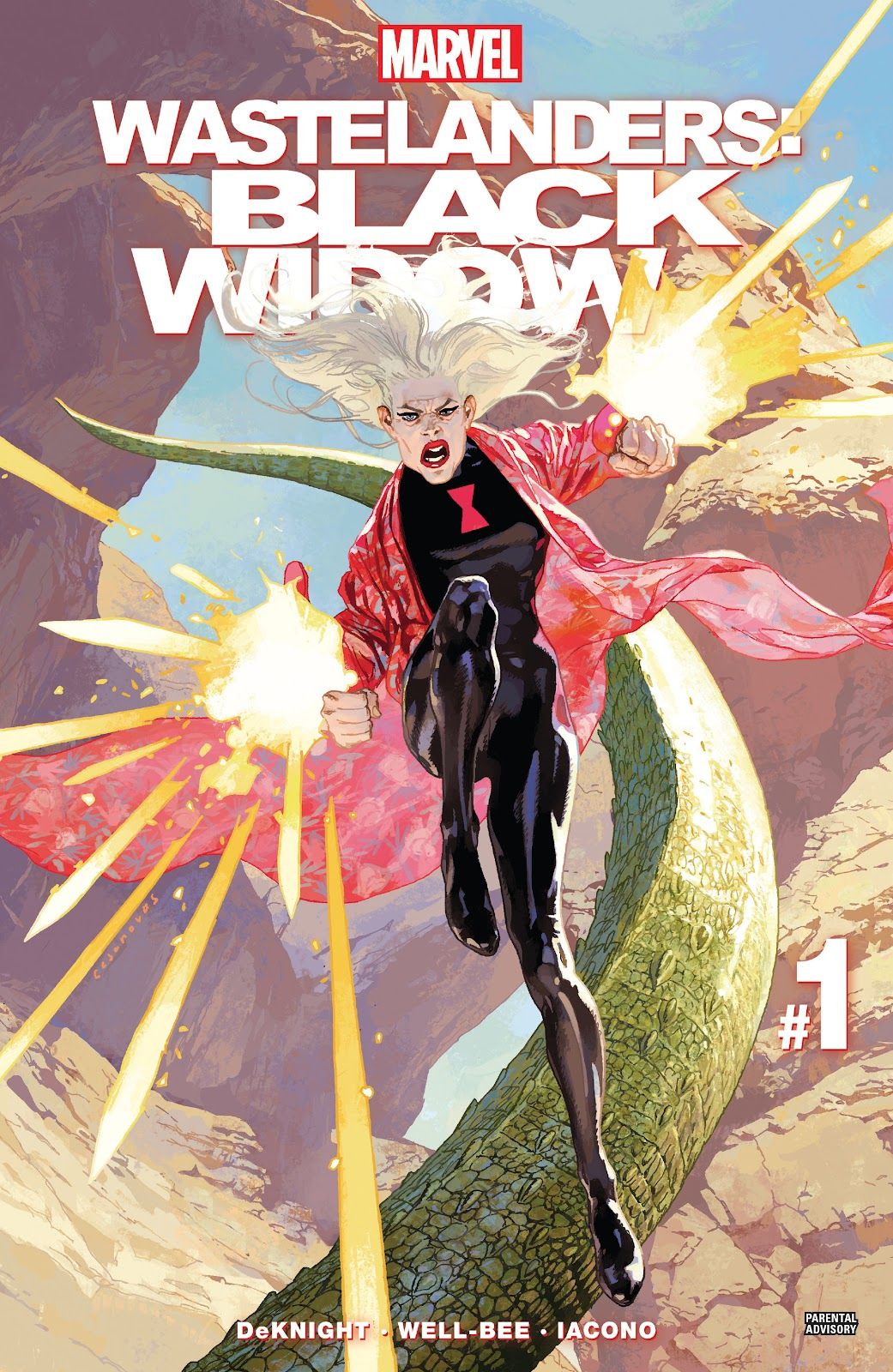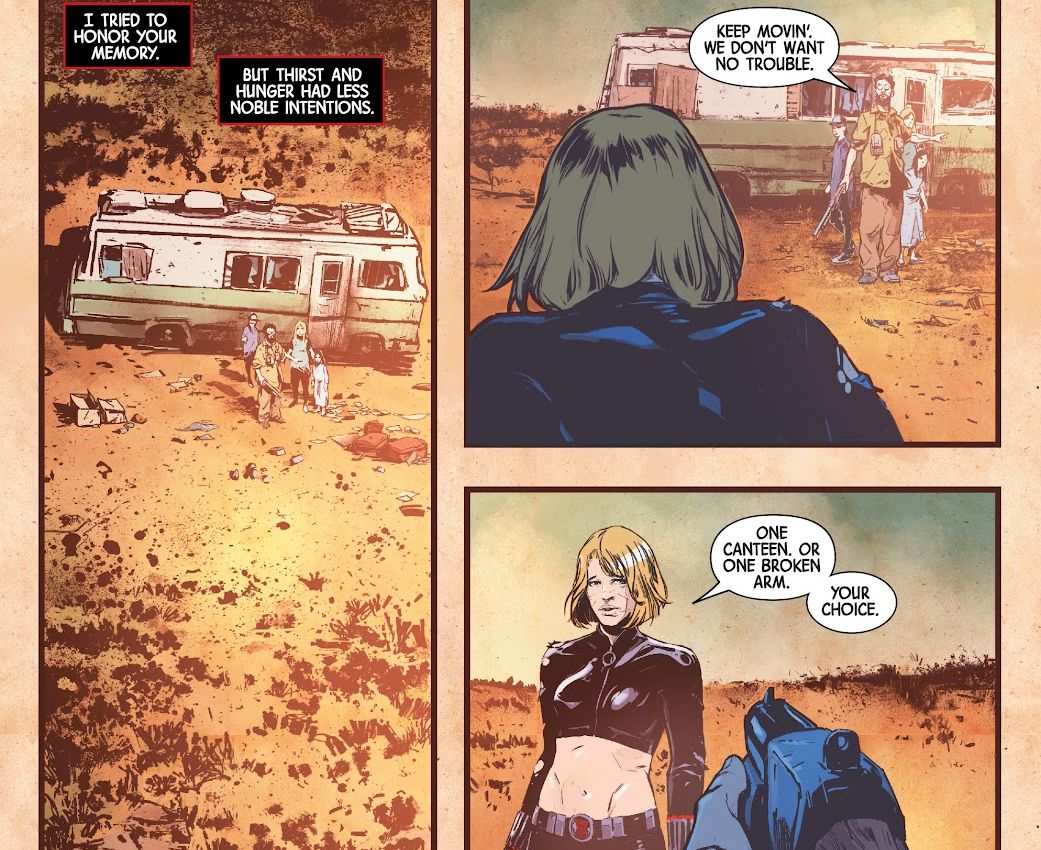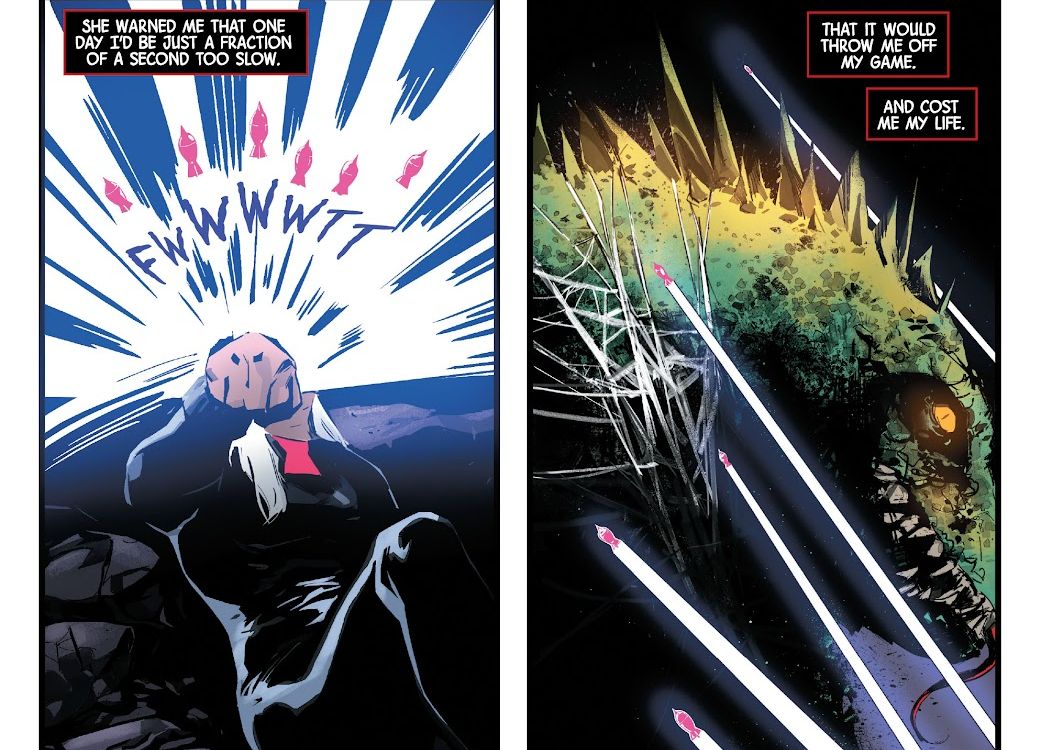Marvel's Wastelanders: Black Widow #1
- WRITER
- Steven S. DeKnight
- Artist
- Well-Bee
- Letterer
- VC's Cory Petit
- Publisher
- Marvel Comics
- Price
- 3.99
- Release Date
- 2022-01-12
- Colorist
- Mattia Iacono
Yelena Belova's dangerous profession makes her a target everywhere she goes. Trained by the infamous Red Room and the second person to take on the Black Widow mantle, Yelena has died, been shot at, and experimented upon throughout her Marvel Universe legacy. Even though her cunning and adaptability have saved her in the past, the Wastelands are a different story. The Wastelands bring vicious gangs and deranged supervillains, making the arid terrain hard to navigate. Wastelanders: Black Widow #1 arrives when fan interest in the character is at its height, thanks to Marvel Cinematic Universe's Black Widow and the Hawkeye series from Disney+. Without any allies, Yelena makes her way through this dystopian world.
Wastelanders: Black Widow #1, written by Steven S. DeKnight with artwork from Well-Bee and Mattia Iacono, opens with Yelena Belova trying to rescue her lover from the clutches of the Lizard King. Yelena has been alone since the day Baron Zemo disguised as Citizen V killed her mentor and friend Natasha Romanov in a fatal incursion by the supervillains. To survive she had to be ruthless, crush everything in her path (including innocent civilians) to get to her goal. Years later, an old Yelena found love and companionship in the most unexpected of places. Now, the only question that remains is whether she will save her loved ones in time.
Wastelanders: Black Widow #1 flows with a non-linear narrative highlighting key moments from Yelena Belova's life in the atrocious Wastelands. The story creates an immersive tale of a determined woman who does not let her age slow down her mission to save the world. Acclaimed screenwriter Steven S. DeKnight, who started off the Wastelanders miniseries, is back for the final one-shot. Unlike Wastelanders: Wolverine #1, he injects a much sinister undertone into Yelena's story. The story progresses from Yelena's perspective with lengthy interjections in the form of first-person narrative boxes. Even though the cutaways take away the reader's attention at crucial moments, they add depth to the tale.
Artist Well-Bee's illustrations capture the gritty, gruesome world of the Wastelands exceptionally well. Well-Bee's gristly contour lines in conjunction with copious amounts of bold inking craft precisely pensive and horrific expressions. Well-Bee's artwork is thoroughly detailed and gives characters like the Lizard a gruesome transformation. Colorist Mattia Iacono uses two different styles to represent the past and the present. He places a sepia filter over panels of flashback scenes to denote a memory while using dark colors in present scenes. The dimly lit corridors and flat shadows used in the issue evoke a sense of primal fear in the readers.
Despite a rushed narrative, Wastelanders: Black Widow #1 is an enthralling read. DeKnight marries elements of horror and mystery in this spy tale while adding ingredients of urgency to create suspenseful storytelling. The Wasteland-themed one-shot portrays a far darker world than its predecessors. However, one of the most surprising entries in the issue is the reintroduction into the Old Man Logan mythos of The Lizard, a man-eating, oversized reptile who rules the coast of Florida. The Lizard is a terrifying sight that makes Wastelanders: Black Widow #1 a memorable read.



